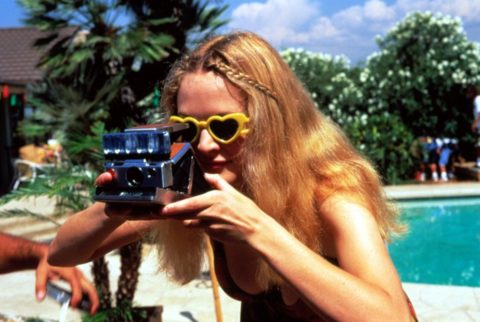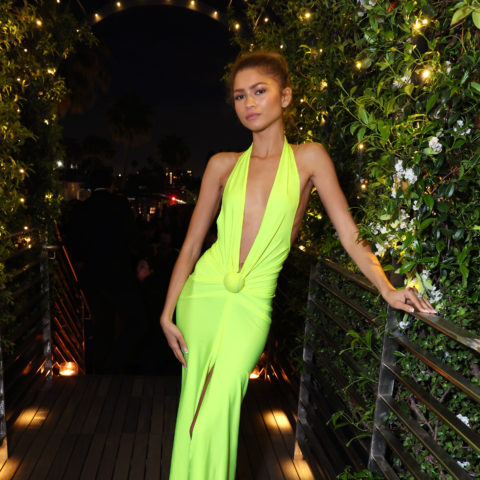What would ’90s style be without its predecessor, the ’70s?

My opinion is simple, controversial, and correct: in terms of style, the seventies are better than the nineties. (And this is coming from somebody wearing a baseball shirt like it’s 1995.)
So let’s start there. As if out of Gucci’s collection from that spring, this year’s looks have also been defined by crop tops, matching prints, and florals. 1995 also brought us Clueless, Now and Then (see: my aforementioned baseball shirt), Kate Moss in Helmut Lang, and sheer pieces from Prada that could easily pass for circa-2015 Chloe. So arguably, we are currently entrenched in the past. But more accurately, we’re entrenched in a decade that came 20 years before we started saying “As if” like Cher Horowitz.
Without the seventies, nineties fashion would be bleak. Wide-legged pants, crop tops, and next-level synthetics got their start in a decade so rich in extravagance. To say that the seventies were groundbreaking isn’t news. (See: the influence in Marc Jacobs’ 2013, 2014 and 2015 collections.) But while we chalk up the playfulness of recent fashion to the best parts of the nineties, we forget that the metallics we associate with something like Electric Circus (seen in collections this year by the likes of Richard Nicoll) stem from the gold-rich aesthetic of our parents’ heyday. And the same goes for knee socks, platform shoes, floppy hats, and high rise jeans. The nineties may tell us they introduced us to baby tees and plaid bell bottoms, but they plucked them from public schools and nightlife of twenty years before—we were just too young (and Internet-less) to broadcast it.
I remember going to school in 1996 in a bright blue turtleneck tucked into high-rise plaid bell-bottoms and feeling like I’d finally arrived. Not only did I think I looked like Sabrina Spellman (I didn’t, and that’s fine), I was proud to look the way my Mom described me: like herself, back in the 1970s. To me, this also meant I looked like Mary Richards, Rhoda Morgenstern, Gloria Bunker, and any/all seventies pop culture icons I’d grown up with via reruns. And as far as I was concerned, these women exuded power in their unapologetic prints and louder-than-life aesthetics. I knew I was also on-point for the mid-1990s, but most importantly, I knew where the trends my classmates and I were embracing had come from. (At least when I wasn’t pointing my right index finger at people, hoping I’d finally learn to cast a spell.)
And this is why I think the seventies trump the nineties so much. Without the seventies—without the risks, the loudness, and the willingness to show off one’s midriff, the nineties wouldn’t have rebelled against the eighties by so effectively stripping down the decade’s power suits and shoulder pads. (I mean, I’m sure designers would’ve found a way to rebel, but does anything contrast over-the-top Wall Street-esque silhouettes like crop tops, kilts, and hip-huggers? I think not.) Ironically, despite their kitsch and brightness, the seventies provided a palette-cleanser, helping to breathe some much-needed fresh air into an industry consumed with excess. The nineties’ only excess came in the form of an abundance of polyester and heel thickness, as if plucked from the costume department of Dazed and Confused.
So do I love the nineties? I’m currently listening to “Finally” on an old school radio station that just played *NSYNC’s first hit. (So yes.) But I think it’s important that we remember where our oh-so-beloved decade came from, and that because of it, we’re afforded the luxury of re-visiting the nineties right now—a.k.a. the lovechild of the 1970s.







